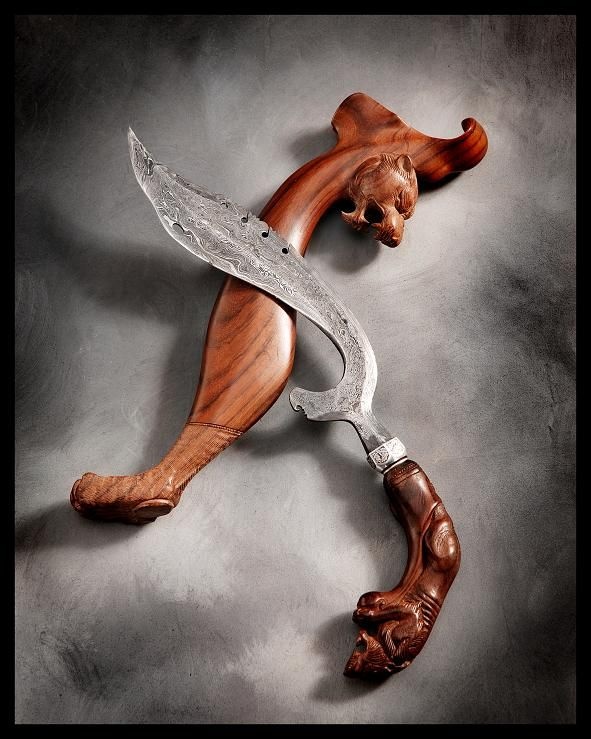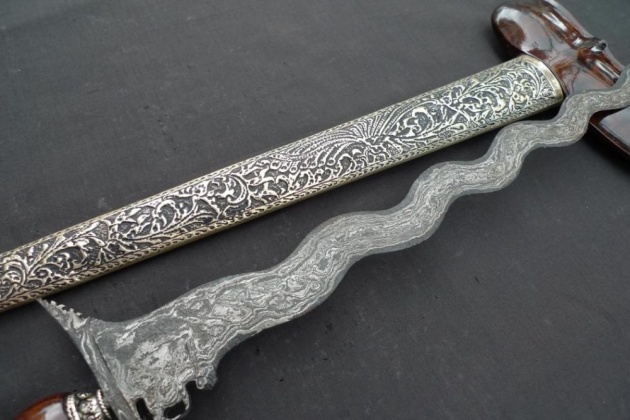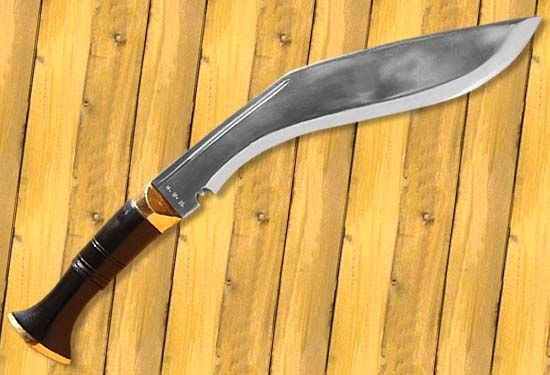Weapons are constantly being replaced with more advanced technology. Knives, however, have stood the test of time. History has given us many strange variations of the humble knife. And many of those were not so humble.
1. Kujang

One of the most fascinating daggers of Java is the kujang, a sickle-shaped dagger believed to uphold the balance of the world. Once popular with Javanese kings, the kujang‘s distinctly shaped blade was believed to have been inspired by a divine message proclaiming their sovereignty.
Unlike many blades, the shape of the kujang did not come from any advance in weapons technology. The unique knife was created after a vision of a Javanese king. The original kujang was a farming tool, but a king named Kudo Lalean claimed he saw a weapon that symbolized the united Java island in a prophetic vision. After the dream, he had his best blacksmith craft the mystical blade. The result was a weapon in the shape of the island, which had three holes to symbolize the three main deities of the Hindu religion.
The weapon later underwent some modification, after Islam became the region’s dominant religion. It was redesigned to look like the letter “Syin,” the first of an important verse in the Quran. The three holes were also changed to five to represent the five pillars of Islam.
2. Kris or Keris

Kris, or Keris, are Javanese daggers seen as both weapons and spiritual objects. They were believed to have magical powers. A number of ancient kris were forged from the astral iron of a meteorite that fell roughly 200 years ago near the temples of Prambanan. They, and what remained of the meteorite their metal came from, were considered sacred objects. Strongly linked to Indonesian culture, almost every part of this symbolic weapon is pregnant with meaning.
The wavy, almost slithering shape of the blade is associated with the snake-like naga from mythology. Even the pattern inside the steel itself was believed to act as a talisman. Some kris were forged using several kinds of steel with varying carbon content. Mixing steel in this fashion is called pattern-welding and creates an effect similar in appearance to the famed Damascus blades. Pattern-welding is a different process, however, and while kris forged by this method retain a similar appearance to the Damascene weapons, they are quite different in chemical composition. The varying patterns smiths could create in the steel were believed to ward off bad fortune and protect the well-being of the weapon’s owner.
3. Kukri

The kukri is the symbol of the Nepalese nation, as well as the Gurkha regiments that made it famous. Relying on their famed knives for close-quarters combat, Nepalese fighters, the Gurkha, allied with the British to maintain control over India during the Indian Rebellion of 1857. The Gurkhas’ fighting prowess gained them a reputation as fearsome soldiers, and their support of England landed them their own regiments within the British forces. The Gurkhas and their knives became so well known that the British used posters of them sharpening their kukris as propaganda to instill fear in Argentine conscript soldiers during the Falklands conflict.
The kukri itself is usually from 40–46 centimeters (16–18 in) long. Much like a machete, it’s a chopping weapon. Originally used by Himalayan farmers, it evolved from a simple farming tool and is still used as a utility knife as well as a weapon. One interesting feature is the notch near the grip that directs blood away so that it can’t wet the handle. It’s said this aspect is symbolic, as larger, sword-like kukris are used in ceremonies to behead animals and bring good fortune to a village. If the head comes off in one stroke, it means luck. But kukris are first and foremost fighting weapons. Even now, they are standard-issue equipment among the Gurkhas, who will keep wearing them even after retirement.
-Original Article by Nathan Willey-
-All credits to Nathan Willey and listverse.com-



